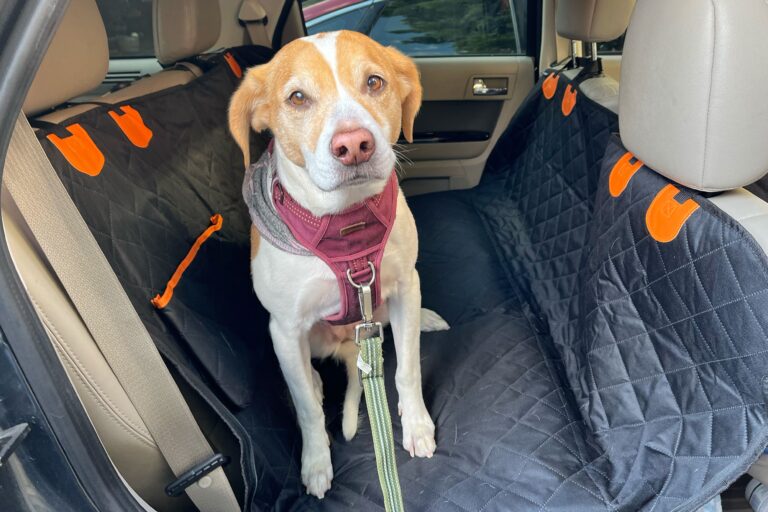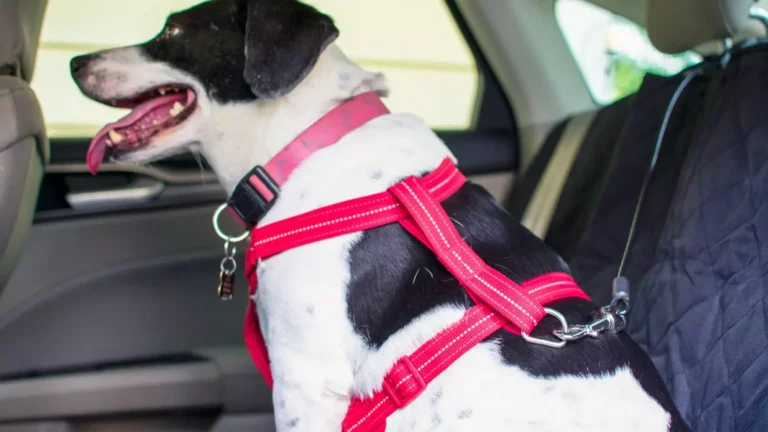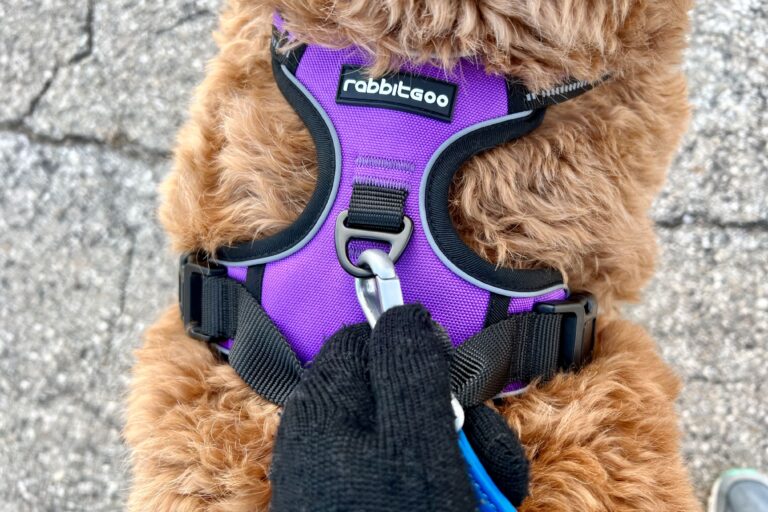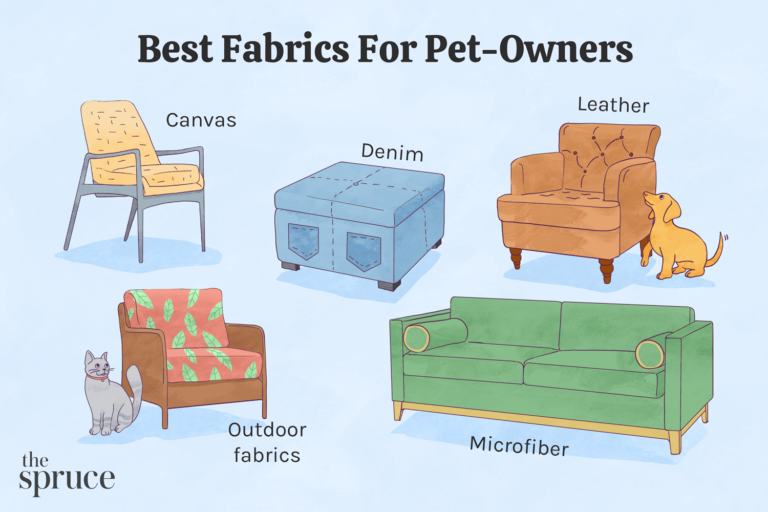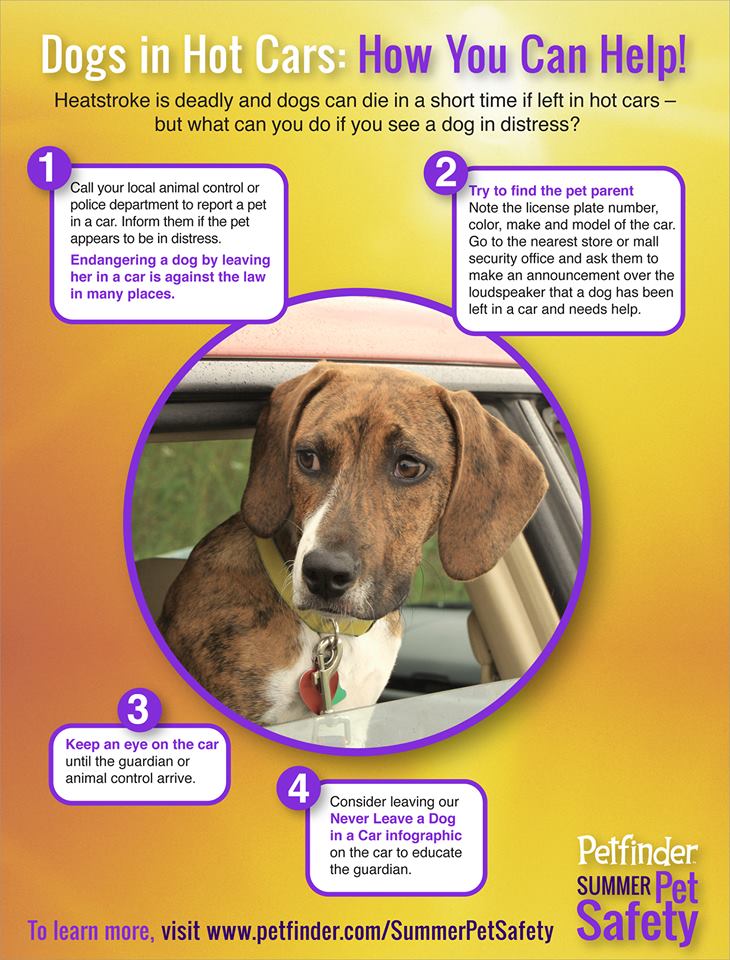What is the Best Way to Harness a Dog in the Car?: Safe Rides 101
To harness a dog in the car, use a dog seat belt or a secure crate. Ensure safety and comfort.
Traveling with your furry friend can be a joyous experience, but it’s crucial to prioritize their safety. One of the best ways to ensure your dog’s well-being in the car is by harnessing them properly. Whether you opt for a dog seat belt that attaches to their harness or a secure crate that gives them space to move around, it’s essential to prevent any potential accidents or injuries.
By taking these precautions, you can enjoy a stress-free journey knowing that your beloved pet is secure and protected while on the road.
Introduction To Dog Car Safety
When it comes to traveling with your furry friend, ensuring their safety is of utmost importance. One crucial aspect of this is harnessing your dog in the car. Not only does it protect your pet, but it also reduces distractions for the driver and ensures the safety of all passengers. In this article, we will explore the risks of unsecured pets in vehicles, as well as the benefits of harnessing them properly.
Risks Of Unsecured Pets
Unsecured pets in vehicles pose serious risks, both to themselves and to the human occupants of the car. In the event of a sudden stop or collision, an unrestrained pet can become a projectile, causing injury or even death to themselves or others in the vehicle. Additionally, unsecured pets can be a significant distraction to the driver, increasing the likelihood of accidents. It’s vital to acknowledge these risks and take appropriate measures to mitigate them.
Benefits Of Harnessing
Harnessing your dog in the car provides numerous benefits. Firstly, it ensures their safety by preventing them from roaming around the vehicle and potentially getting injured during sudden movements. Moreover, it helps to minimize distractions for the driver, thereby reducing the risk of accidents. Harnesses also offer peace of mind to pet owners, knowing that their beloved companions are secure and protected during travel. It’s essential to recognize the advantages of proper harnessing for both the pet and the human occupants.
Types Of Dog Car Restraints
When it comes to traveling with your furry friend in the car, it’s important to ensure their safety. One of the best ways to do this is by using a dog car restraint. There are various types of restraints available, but in this article, we will focus on harnesses and carriers as the main options.
Harnesses Vs. Carriers
A harness is a popular choice for restraining dogs in the car. It is a secure and comfortable option that allows your dog to sit, stand, or lie down comfortably while still being safely restrained. Harnesses are designed to distribute the force of impact evenly across your dog’s body, reducing the risk of injury.
On the other hand, carriers are another option for restraining your dog in the car. Carriers provide a confined space for your dog to travel in, keeping them secure and preventing them from moving around. They come in various sizes and materials, offering different levels of comfort for your furry friend.
Features Of A Good Harness
A good harness should have certain features to ensure the safety and comfort of your dog during car rides. Here are some important features to look for:
- Adjustable Straps: A harness with adjustable straps allows you to customize the fit to your dog’s size and shape, ensuring a secure and comfortable fit.
- Padded Chest Plate: A padded chest plate helps distribute the force of impact across your dog’s chest, reducing the risk of injury.
- Strong and Durable Materials: Look for a harness made from strong and durable materials, such as nylon or polyester, to ensure it can withstand the rigors of car travel.
- Easy-to-Use Buckles: The harness should have easy-to-use buckles that securely fasten and release, allowing for quick and hassle-free installation.
By choosing a harness with these features, you can ensure your dog’s safety and comfort during car rides.
Selecting The Right Harness
Choose a harness that fits snugly without restricting movement.
Opt for sturdy materials like nylon or polyester for longevity.

Credit: www.dogtopia.com
Installation Tips For Dog Harnesses
When it comes to traveling with your furry friend, ensuring their safety in the car is of utmost importance. One effective way to keep your dog secure and protected is by using a dog harness. However, it’s crucial to install the harness correctly to ensure it functions properly. In this section, we will provide you with step-by-step instructions on how to install a dog harness in your car, along with common mistakes to avoid.
Step-by-step Instructions
- Begin by selecting a dog harness that is suitable for your dog’s size and weight. Make sure the harness is designed specifically for car travel.
- Position the harness on your dog’s body, ensuring that the straps are aligned properly. The chest strap should rest on your dog’s chest, while the back strap should sit comfortably along their spine.
- Secure the harness by fastening the buckles or clips. Ensure that the harness is snug but not too tight, allowing your dog to move comfortably.
- Attach the carabiner or clip on the harness to the seat belt anchor point in your car. This could be a seat belt buckle or a dedicated anchor point specifically designed for securing dog harnesses.
- Double-check the harness to ensure it is properly fastened and secured. Gently tug on the harness to ensure it is stable and doesn’t slide or loosen.
Common Mistakes To Avoid
While installing a dog harness may seem straightforward, there are some common mistakes that pet owners often make. By being aware of these mistakes, you can ensure your dog’s safety during car travel.
- Avoid using a harness that is too large or too small for your dog. It should fit snugly without restricting their movement or causing discomfort.
- Do not attach the harness to your dog’s collar or use a leash as a substitute for a proper harness. This can be dangerous and may cause injury in the event of sudden stops or accidents.
- Avoid positioning the straps in a way that restricts your dog’s breathing or causes chafing. Ensure the harness is adjusted correctly for their comfort.
- Never leave your dog unattended while harnessed in the car. They should always be supervised to prevent any potential hazards.
By following these step-by-step instructions and avoiding common mistakes, you can harness your dog in the car effectively and ensure their safety throughout the journey. Remember, a properly installed harness is essential for both your dog’s well-being and your peace of mind.
Training Your Dog For Car Rides
Training your dog for car rides is essential for their safety and comfort. When it comes to harnessing your dog in the car, the best way is to use a secure and adjustable harness that attaches to the seat belt, ensuring they stay in place and preventing any potential accidents.
Taking your furry friend for a car ride can be exciting, but it can also be dangerous if you don’t train your dog to behave properly in the car. Training your dog for car rides is important to ensure their safety and the safety of other passengers. Here are some acclimatization strategies and positive reinforcement techniques to help you train your dog for car rides.Acclimatization Strategies
Acclimatization is the process of getting your dog used to the car. Dogs can become anxious or scared in a new environment, so it’s important to start with short trips and gradually increase the length of the trip. Here are some acclimatization strategies to help your dog become comfortable in the car:- Start with short trips around the block
- Gradually increase the length of the trip
- Take breaks to allow your dog to stretch their legs and go to the bathroom
- Make the car a comfortable and safe space for your dog with a cozy bed or blanket
Positive Reinforcement Techniques
Positive reinforcement is a training method that rewards good behavior. This technique can be used to train your dog to behave properly in the car. Here are some positive reinforcement techniques to help you train your dog for car rides:- Use treats to reward your dog for good behavior, such as sitting calmly in the car
- Give your dog verbal praise for good behavior, such as “good boy” or “good girl”
- Use a clicker to mark good behavior and reward your dog with treats
- Be patient and consistent with your training, and don’t punish your dog for bad behavior
Safety Standards And Certifications
Ensure your dog’s safety in the car by using a harness that meets safety standards and certifications. Opt for a crash-tested harness to keep your furry friend secure during car rides.
As a responsible pet owner, it is your duty to ensure the safety of your furry friend when on the road. One of the most important aspects of ensuring your dog’s safety is by properly harnessing them while in the car. In this post, we will discuss the best ways to harness your dog in the car, focusing on safety standards and certifications that you should keep in mind.Industry Regulations
When it comes to dog car harnesses, it is essential to look for products that meet industry regulations. The Center for Pet Safety (CPS) is a non-profit organization that conducts crash tests on various pet products, including car harnesses. They provide valuable information on the safety and effectiveness of these products, and their certification is a good indication of a harness’s reliability. Look for a harness that has been certified by CPS, ensuring your dog’s safety in case of an accident.Trusted Brands And Products
Choosing a trusted brand and product is crucial when it comes to harnessing your dog in the car. Brands like Kurgo, Sleepypod, and Ruffwear are known for their quality and safety standards. Look for harnesses that have been crash-tested and certified by CPS. Additionally, make sure the harness is adjustable and fits your dog properly to ensure maximum safety. Avoid cheap knock-offs and untested products as they may not provide adequate protection in the event of a collision. In conclusion, when it comes to harnessing your dog in the car, safety should be your top priority. Look for products that meet industry regulations and have been certified by organizations like CPS. Choose trusted brands and products that have been crash-tested and ensure the harness fits your dog properly. By following these guidelines, you can rest assured that your furry friend will be safe and secure while enjoying the ride.Travel Tips For Long Journeys
Traveling long distances with a dog can be an exciting adventure, but it’s important to ensure their safety and comfort during the journey. Here are some essential travel tips for long journeys with your furry companion.
Breaks And Hydration
Dogs, like humans, need regular breaks during long car journeys. Ensure that you stop every few hours to allow your dog to stretch their legs, relieve themselves, and hydrate. Bring a portable water bowl and offer them water during these breaks. Plan your route ahead of time to include pet-friendly rest stops where your dog can walk and drink water.
Managing Anxiety And Motion Sickness
Some dogs may experience anxiety or motion sickness during car rides. To help alleviate these issues, create a comfortable and familiar environment in the car by bringing their favorite blanket or toy. You can also consult with your veterinarian about natural remedies or medications that can help manage anxiety and motion sickness for your dog.
Legal Requirements And Responsibilities
When traveling with a dog in a car, it’s essential to ensure their safety and the safety of others on the road. Legal requirements and responsibilities for harnessing dogs in vehicles vary by state, and understanding these laws is crucial to avoid potential fines and ensure the well-being of your pet. This article will delve into state-specific laws and the implications of non-compliance with these regulations.
State-specific Laws
Each state has its own set of laws regarding the harnessing of dogs in vehicles. It is important to familiarize yourself with the specific regulations in your state to ensure compliance. For instance, some states may mandate the use of a specific type of restraint system for dogs, while others may have more general guidelines. By staying informed about the laws in your state, you can make sure to adhere to the necessary requirements and keep your dog safe during car journeys.
Implications Of Non-compliance
Failure to comply with the laws related to harnessing dogs in vehicles can have serious implications. This can lead to fines and penalties, as well as an increased risk of accidents and injuries. It is crucial to understand that these laws are in place to protect both the animal and the occupants of the vehicle. By adhering to the legal requirements, you can avoid the negative consequences of non-compliance and prioritize the safety of everyone on the road.
Personal Stories And Testimonials
Safely harnessing your dog in the car is crucial for their well-being. Personal stories and testimonials often highlight the importance of using a dog harness or a travel crate to keep your furry friend secure during car rides. Finding the best way to harness your dog will provide peace of mind and ensure their safety on the road.
When it comes to traveling with your furry friend, safety should always be a top priority. One of the most important safety measures you can take is properly harnessing your dog in the car. While there are many different methods and products available, it can be difficult to determine which is the best for your dog and your car. That’s why personal stories and testimonials from other dog owners can be so helpful. Here are some real-life experiences and lessons learned from dog owners who have harnessed their dogs in the car.Real-life Experiences
Many dog owners have found that using a car harness is the safest and most effective way to keep their dog secure while driving. One owner shared her experience using a harness during a car accident, stating that her dog was safely contained and uninjured thanks to the harness. Another owner noted that her dog was able to enjoy car rides more once she got used to wearing a harness, as she was no longer sliding around on the seat.Lessons Learned
Of course, not all dog owners have had positive experiences with car harnesses. Some have found that their dogs don’t like the feeling of being restrained or that certain harnesses are uncomfortable for their pets. One owner suggested trying out different harnesses to find the right fit for your dog, while another recommended gradually getting your dog used to wearing a harness by starting with short car trips and gradually working up to longer rides. No matter what method you choose, remember that the safety of your dog is paramount. Harnessing your dog in the car can help prevent injuries in the event of an accident and can also keep your dog from distracting you while driving. By learning from the experiences of other dog owners, you can find the best way to harness your dog in the car and ensure that both you and your furry friend stay safe on the road.
Credit: ruffwear.com

Credit: www.kurgo.com
Frequently Asked Questions
What Is The Safest Way To Harness A Dog In The Car?
The safest way to harness a dog in the car is to use a crash-tested harness or a secured crate.
How To Properly Restrain A Dog In A Car?
Secure your dog in a car using a harness, crate, or seat belt designed for pets. Avoid letting your dog roam freely to prevent accidents and injuries while driving.
How To Fasten A Dog Harness In A Car?
To fasten a dog harness in a car, secure it to a seat belt or use a car safety harness. Ensure a snug fit for safety.
What Is The Best Way To Travel With A Dog In A Car?
Secure your dog with a harness or carrier. Use a pet barrier or crate for safety. Make frequent stops for bathroom breaks and water. Never leave your dog alone in a hot car.
Conclusion
To ensure your dog’s safety during car rides, using a harness is crucial. It keeps them secure and prevents distractions. Remember to choose a harness that fits well and is comfortable for your furry friend. By following these tips, you can enjoy stress-free travels with your canine companion.
- Can I Get in a Taxi Without a Car Seat? - January 26, 2025
- Can I Get Chlamydia From a Toilet Seat? - January 26, 2025
- Can I Get an Uber With a Car Seat? - January 26, 2025


